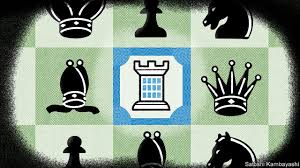The quest to find companies that have a lasting competitive edge

IN 1965 WARREN BUFFETT acquired Berkshire Hathaway, a textile company based in New England, for his investment partnership. When he began buying the stock, in 1962, Berkshire had working capital worth $ 16 a share; the shares sold for $ 8. So Mr Buffett was getting the rest of the firm’s assets for less than nothing. This was the sort of “value investing” that had made Mr Buffett and his partners a tidy pile over the preceding decade.
Berkshire would become a wildly successful investment vehicle. On May 4th, 40,000 of its shareholders gather for its annual general meeting in Omaha, Nebraska, for a dose of Mr Buffett’s folksy wisdom. It continues to make a wide range of financial investments: witness this week’s offer to buy $ 10bn of debt-like securities and warrants in Occidental, an oil firm that is negotiating a merger.
Yet he came to regret buying Berkshire stock. The return on investment was paltry, because the firm had no unique edge or products. Textiles are commodities. No one ever asked his tailor for a Hathaway suit lining.
In its way, Berkshire provided a valuable lesson. Mr Buffett’s strategy shifted. Instead of “buying fair companies at wonderful prices”, he would buy “wonderful companies at fair prices”. To make the grade, a firm must have a lucrative position in the marketplace. But it needs more. To be a truly great investment, the company should also have a “moat”.
This is Mr Buffett’s shorthand for a company with a lasting competitive edge—the philosopher’s stone of business strategists and stockpickers. Its profits are secure because other companies cannot easily replicate what it does. A niche of this kind acts like a moat around a castle, keeping rival firms out. It is super-wonderful if the castle is run by a knight who spends his riches on widening the moat, rather than blowing it all on banquets or natty coats of arms. But the moat is the main thing.
Looking back, Mr Buffett has invested in firms with two sorts of moat. The first type operates in a market that has room for just one profitable firm. In the 1970s Mr Buffett’s monopoly of choice was citywide newspapers, which had a lock on advertising. BNSF, America’s largest freight railway, which Berkshire has owned outright since 2009, is a more recent example. The moat’s contours are not as clear for the second type. The firm has competitors. But it has a bond with its customers based on a reputation for products of a consistently high quality. So strong is the firm’s brand that consumers are slow to switch allegiance, even when prices are raised.
Mr Buffett’s first big bet on a consumer franchise of this kind was American Express, on which Berkshire staked a quarter of its capital in 1964. Amex had an enviable position in charge cards. Over the years, other franchise stocks were snapped up: See’s Candies, a maker of fancy chocolates; Gillette (now part of P&G); Wells Fargo; and latterly Apple. The apex of this strategy was the frenzied acquisition of shares in Coca Cola in the late 1980s. Mr Buffett saw that its profits were about to accelerate as it conquered new markets.
With hindsight, Coke, Gillette and the rest look like sure-fire winners. That Berkshire made losing bets on firms with apparently unbreachable moats shows the difficulty of foresight. An example was Tesco, a British grocery chain. It was the leading firm in an oligopoly—a classic Buffett play. But after it issued several profit warnings, Berkshire sold at a hefty loss in 2014. Other moats are springing leaks. The marriage of Heinz and Kraft, two food-manufacturing giants, brokered by Berkshire and 3G, a private-equity firm, is in trouble. New brands built on social media and online sales are challenging the established order.
“Moats are lame,” teased Elon Musk, a tech entrepreneur, last year. What gives firms a competitive edge, he said, is the pace of innovation. In fact, investors’ enthusiasm for tech firms such as Amazon, Facebook and Google has been because they appear to have deep moats. (Mr Buffett has admitted he has no insights on tech.) In any event, it is wrong to think that innovation is a guarantee of profits. Firms that come up with ideas often see rivals reap the benefit.
It is hard enough to find a firm with a moat; it is much harder not to overpay for its stock. Many of the signature purchases of Mr Buffett’s career, such as Amex and Wells Fargo, were at knock-down prices. The strategy (buy stocks with moats) sounds simple; but it is not easy. Carrying it out takes skill, nerve and discipline. If it were easy, everybody could do it.
